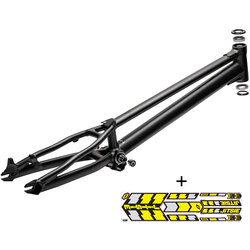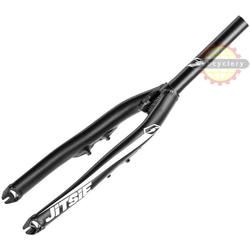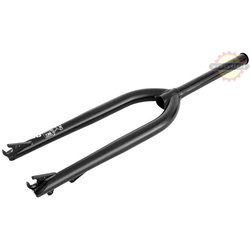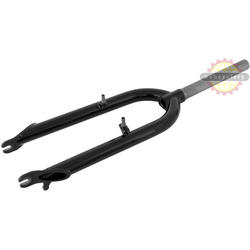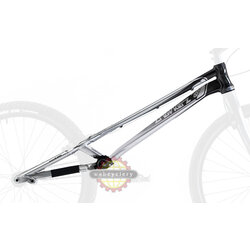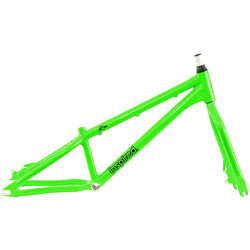Bike Trials Geometry Guide
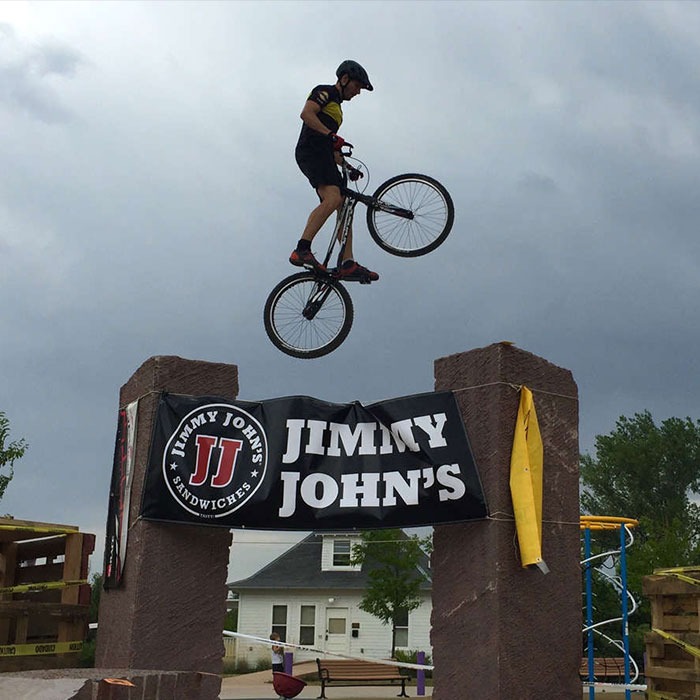
Author: Ross Winsor, Webcyclery pro trials rider and 5x US National Champion
Last updated: June 2023
The Geometry of Trials Bikes
Bike Trials is an unusual sport that differs considerably from other cycling disciplines, and as such, the geometry of trials bikes is considerably different from most other kinds of bikes. If you’re new to bike trials, this guide will hopefully provide you with a better understanding of what different measurements mean and what their importance relating to trials is.
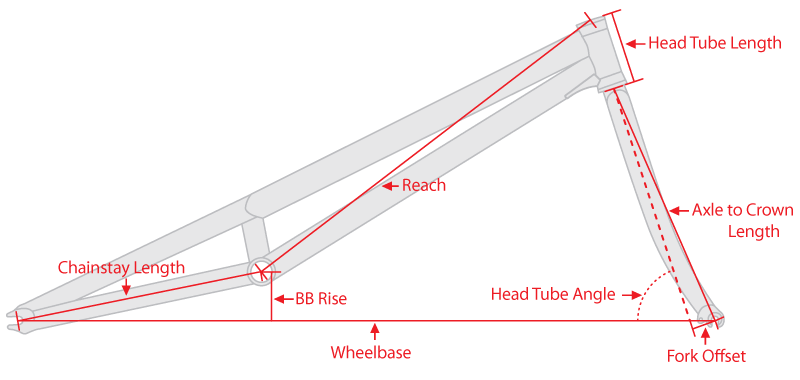
Frame Geometry
Wheelbase
Wheelbase is the distance between the two axles of the wheels. Stock (26”) trials bikes often have longer wheelbases than a traditional 26" wheeled mountain bike. Common measurements for 26” trials wheelbases range from 1040mm to 1115mm. Mod (20”) trials bikes are shorter than stocks with typical measurements ranging from 980mm to 1030mm. 24” trials bikes are somewhere in between as you might expect. In general, a longer wheelbase means a more stable platform on which to balance. It’s also great for spanning gaps between obstacles and more advanced moves such as taps. A shorter wheelbase will make it easier to pull the bike up into a bunny hop as well as maneuvering in tight spaces. Shorter wheelbases also make spins and other street moves easier. So, if you like mixing some BMX moves in with trials then you’ll probably prefer a shorter wheelbase. On the other hand, if you don’t like speed and want to do a lot of hopping, basically pure trials, then a longer wheelbase will most likely suit you better. Taller riders often prefer longer wheelbases while many shorter riders choose shorter wheelbases for fit and optimal comfort on the bike.
Chainstay Length
Chainstay length is measured from the rear axle to the center of the bottom bracket. Trials bikes typically have shorter chainstays than most other bikes. Typical chainstay lengths for trials bikes range from 350mm to 395mm. Having shorter chainstays makes balancing on the rear wheel easier and allows for more precision during rear wheel moves. Shorter chainstays also make pulling the front wheel up easier for bunny hops and other similar moves. A trials bike with slightly longer chainstays can give more leverage for pedalkicks and gaps, allowing the rider to put more force into the moves. Many modern trials frames have similar chainstay lengths.
Bottom Bracket Rise
Bottom bracket rise is a little trickier to measure. It is the distance from the center of the bottom bracket to a straight line drawn between the axles. Nearly all modern trials bikes have bottom bracket rise, meaning the bottom bracket is higher than the axles. Most non-trials bicycles actually have bottom bracket drop (the center of the bottom bracket is lower than the axles). Generally, having a lower bottom bracket makes the bike more stable on two wheels, while a higher bottom bracket means more stability when you’re on the rear wheel. A bike with a high bottom bracket doesn't necessarily feel unstable on two wheels, it just feels a little odd at first compared to a lower bottom bracket bike. Typical bottom bracket rises on trials bikes range from 0 (no rise) to 100mm. 20" bikes usually have slightly higher bottom brackets than 26" bikes. As trials has progressed as a sport and bikes have continued to evolve into more specialized geometries, bottom bracket heights have generally gotten higher, particularly for more competition-oriented bikes. Many beginners will feel more comfortable learning on a lower bottom bracket bike, while more experienced riders often prefer a higher bottom bracket. In the end though, it all comes down to personal preference and riding style.
Head Tube Angle
The head tube angle is the angle the head tube makes with the ground. Most trials bikes have head angles between 70° and 74°. The head angle is a more subtle measurement than wheelbase or bottom bracket height. A steeper head angle (higher number) puts the rider more over the front end of the bike and shortens the wheelbase, while a slacker head angle gives the bike a more relaxed feel and a longer wheelbase. As an exaggeration, think of the difference between a road racing bike with a steeper head angle and a cruiser with a slacker head angle. A steeper head angle will quicken up the handling of a bike and also make many front wheel moves easier. It also allows the wheelbase to be shorter while keeping the reach the same, which is becoming a desired characteristic on many street trials bikes.
Head Tube Length
Head tube length is measured from the bottom of the head tube to the top. Typical head tube lengths for trials frames range from 100mm to 130mm. This measurement can be good to know when determining what fork/stem/frame combination you might want, as certain fork steerer tubes might be too short for certain frame/stem combinations. However, most trials frames should work fine with most trials forks and stems. See Also: Steerer Length
Reach
Reach is a relatively newly-developed measurement to help gauge how long the cockpit of a trials frame will be. It is measured from the center of the bottom bracket to the top center of the headtube. It gives an idea of how long a frame will feel, independent of the wheelbase. Used in conjunction with stem and handlebar measurements, it can tell you roughly how far away your hands will be from your feet when riding the bike. A shorter reach produces a smaller cockpit, while a longer reach gives a more roomy feel. The actual distance between hands and feet when riding can be fine-tuned with the stem, headset spacers, handlebar, and handlebar position. Reach can often help to determine what length stem to run on a certain frame to accommodate a rider's height.
Fork Geometry
Axle to Crown Length
The axle to crown length of the fork, as you might guess, is the distance between the axle (center of the dropouts) and the crown (where the bottom race of the headset rests). A fork with a longer axle to crown measurement will bring the front end of the bike up, while a shorter fork will give the bike a less upright position. Typical axle to crown lengths for 26” trials forks range from 395mm to 420mm while 20” forks usually measure between 360mm and 390mm. Currently, most 24" frames are designed around the geometry of a 26" fork, so while you may see something described as a 24" fork, the only difference between that and a 26" fork is where the vee or 4-bolt mounts are placed to line up with the rim. The axle to crown measurements are the same.
Fork Offset
Fork offset is the distance from the axle to a straight line drawn from the steerer tube. Most trials forks have 25-45mm of offset, meaning they bend somehow so that the axle is ahead of the steerer tube. A fork with more offset will lengthen the wheelbase of the bike, while a fork with less offset will shorten the wheelbase. Despite their appearances, straight blade and curved blade trials forks usually have similar offsets. This is because straight blade forks have the legs welded on at an angle, while curved blade forks have the legs welded on in a straight line with the steerer.
Steerer Length
Steerer length is the length of the steerer tube from the top to the crown (where the bottom race of the headset rests). Steerer lengths usually range from 185mm to 230mm. This measurement can be important to know if you have a stem with a lot of stack height or a frame with a long head tube. Your fork steerer needs to be long enough to accommodate the combined stack height of the headset, frame, stem, and whatever spacers you’re using.
Hopefully this helped you, but as always, if you have any further questions, please contact us or visit us today.
Trials bike frames for the perfect custom build
If you're searching for the perfect trials bike, why not build your own? Start with one of our killer trials frames and begin assembling your dream bike.

